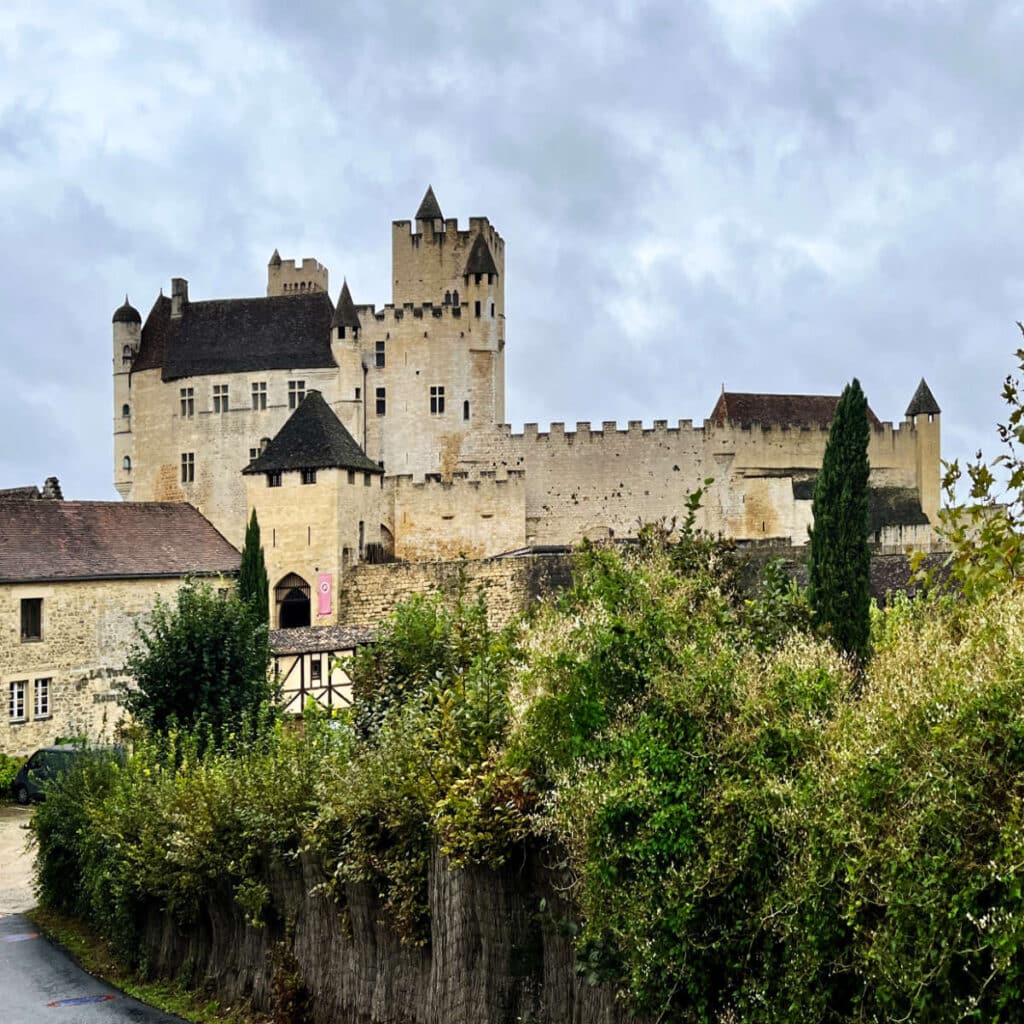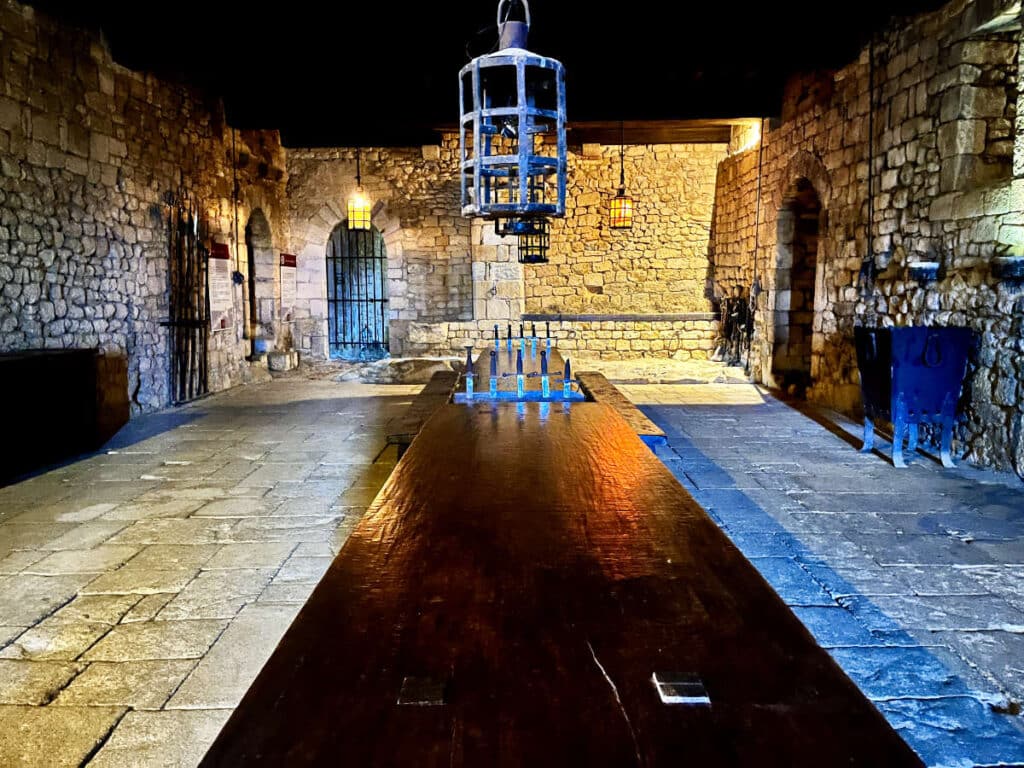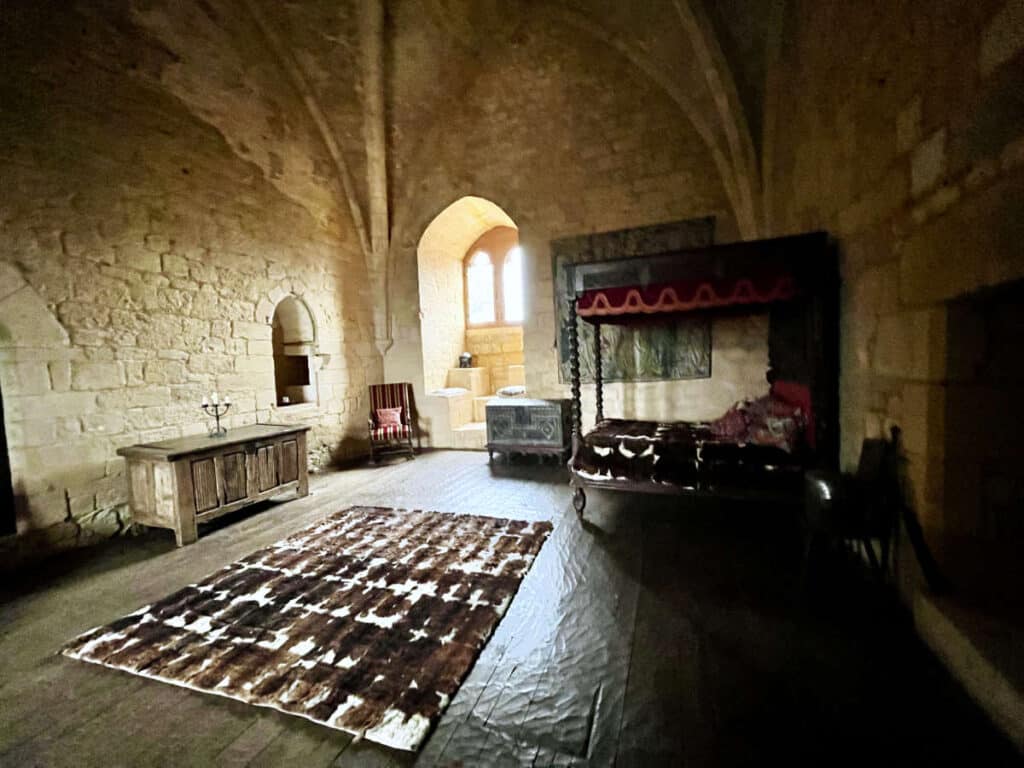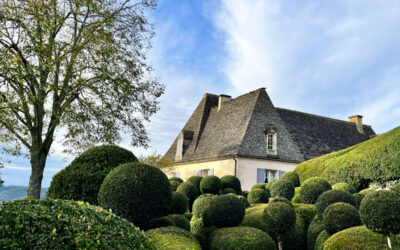The Château de Beynac has one big claim to fame: Richard the Lionheart. The castle was owned by the English King between 1189 and 1199.
Located on the edge of Nouvelle Aquitaine in the village of Beynac-et-Cazenac, this was once the border of lands fought over between the French and English.
The castle is nestled majestically on a hill overlooking the Dordogne river, standing as a timeless testament to the medieval era and the Hundred Years’ war.

This is because English King Richard was also the Duke of Aquitaine, a duchy inherited from his mother Eleanor. (In addition, he was the Duke of adjoining Normandy, lands inherited from his great-great grandfather, William the Conqueror.)
With the English Plantagenets owning such large swaths of land in what is now mainland France, they were not interested in paying allegiance to the French monarchs. Rather, they had their own claim to the throne of France.

All this would set the stage for the Hundred Years’ war, with the Château de Beynac changing allegiances several times. This imposing fortress takes visitors on a journey through the lives of Eleanor and Richard, and those who lived here in the medieval era.
So let’s have a look at what there is to see and do at Château de Beynac, shall we? Allons-y!
History
The roots of Château de Beynac date back to the 12th century, when it was built by the first barons of Beynac. When Baron Adhémar de Beynac died in 1189 without any children the castle was inherited by Richard the Lionheart as the Duke of Aquitaine.
After Richard’s death in 1199 in nearby Limousin, the castle went back to other branches of the Beynac family. The lands on this side of the Dordogne river were however still part of Aquitaine and the English Plantagenets’ lands.

With both the English and French fighting for power, the Château de Beynac played a pivotal role as a defensive stronghold during the the Hundred Years’ War.
The castle however remained in the Beynac family even after the victory of the French during the Hundred Years’ war in 1453. In fact, the castle remained in the Beynac family until the death of Pierre, last Marquis of Beynac.

The castle was purchased privately in 1962 at auction for 170,000 francs, and has since undergone substantial renovations. Along with the nearby Château de Castelnaud, the castle now welcomes thousands of visitors every year to showcase the history of Richard, the English, and the Hundred Years’ war.
Inside the Château
The imposing outer defenses of the Château de Beynac are a testatment to the medieval engineering marvels designed to thwart invaders. Once inside the castle’s inner courtyard, Beynac takes you through the heart of medieval daily life within its walls.

The Great Hall with its large dining table evokes the grandeur of medieval feasts and celebrations, offering a sensory journey into the past. There are several rooms showing what castle life was like, but probably the room that visitors will be most interested in is the bedroom of Richard the Lionheart.
Richard did not spend a lot of time here, but when he did, his bedroom was located near the top of the castle in a room that has been set up to show what it might look like.

Near the walls of the castle stands the castle’s chapel. The simplicity of the chapel stands in stark contrast to the fortress’s military aspects, highlighting the dual nature of life within the castle walls.
Perhaps the most breathtaking aspect of Château de Beynac is the unparalleled panoramic view from its ramparts of the Dordogne Valley.

How to get to the Château de Beynac?
Château de Beynac is about 330 miles (535 km) from Paris and is about 125 miles (200 km) from Toulouse and Bordeaux. The only way to get to the château is by car or bus.
If you are driving down from Paris, the closest big city along the way is Limoges, which is about 95 miles (160km) away. If you don’t wish to drive, there are organized tours leaving from Sarlat-la-Canéda that will take you around the sights around the Dordogne river.
How easy is it getting around?
The Château de Beynac is a historical monument, so it has not been readapted to modern accessibility standards. Strollers and wheelchairs will find it difficult to manoeuvre around the narrow staircases, etc.
How much time should you spend?
About a day is enough in Beynac-et-Cazenac village center and visiting the castle, but you may want to stay longer to explore the surrounding countryside.
When is the best time to visit?
Beynac-et-Cazenac is a very popular and lively town in the tourist summer season.
In the last two weeks of April, the Château of Beynac takes part in the Château en Fête celebrations in the Dordogne, where several châteaux open their doors to visitors with various animations and medieval shows. It is a very popular festival and a must if you are interested in medieval life in France.
Where should you stay?
There are not a lot of choices for accommodation in the Beynac town center, but here are some recommended hotels:
- €€ – Hôtel du Château – in town center
- €€ – Hôtel Pontet – in town center
- €€€ – L’Oustal de Vézac – outside Beynac city center, in the town of Vézac with a swimming pool.
You may want make it your base as you explore the nearby towns of Sarlat-la-Canéda, Castelnaud-la-chapelle, Rocamadour, Lascaux caves, Gouffre du Padirac, La Roque-Gageac, Domme, etc.

If you enjoyed that article, you may like to read more about traveling around Nouvelle Aquitaine. A bientôt!




